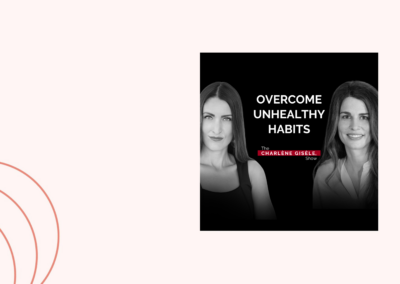If you are interested in managing stress and help prevent it in the future, you have a choice of stress management methods at your disposal and you can decide which one best suits your needs and lifestyle. Mindfulness-Based Stress Reduction (MBSR) and Sophrology are both effective stress-management tools but there are some clear differences in the two techniques, which may prove to be more or less effective for each individual.
Mindfulness-Based Stress Reduction
The origins of Mindfulness-Based Stress Reduction (MBSR) stem from Eastern philosophies, which more recently has been combined with Western psychology. MBSR is structured as a programme over eight weeks to help people suffering from stress and anxiety.
The founder of MBSR is Professor Jon Kabat-Zinn who developed the technique in the late 1970s at the University of Massachusetts Medical Center. MBSR combines different elements from mindfulness and body awareness techniques to help manage stress. It has been described as a secular adaptation of Buddhism that is applied to mental health. The programme is run in groups with progressive learning of different elements of stress management starting from body scans and stretching exercises. It is available in US hospitals for the treatment of anxiety, depression and chronic pain, and some practitioners also offer online courses. The aim is to practise mindfulness in daily life focusing on being in the present moment and observing your thoughts without judgement. This in turn allows the person who practises the technique to develop better coping mechanisms to manage stress by looking at their own situation more objectively and by choosing the way they respond to stressful situations.
At first glance, MBRS and Sophrology may seem similar because they both focus on being in the present moment with a non-judgemental attitude using elements from meditation. Similarly, they both use Eastern and Western approaches to stress management including meditation, body awareness and breathing to tune into the body and calm the mind.
Difference between Mindfulness-Based Stress Reduction and Sophrology
Sophrology was founded in 1960 by Professor and neuro-psychiatrist Alfonso Caycedo who opened the first clinical Sophrology department at Madrid University Hospital. His aim was to find a gentle but effective practice to harmonise consciousness, decrease stress and address mental health issues. His studies led him to combine elements of Eastern practices (such as Buddhism and Zen meditation and Yoga) with phenomenology (a branch of psychiatry), psychology and relaxation as a way to balance and positively influence states of consciousness.
The technique is a unique blend of relaxation, breathing, gentle movement, visualisation and sound of the voice to help individuals reach a dynamic relaxation state, where they can unlock their full potential, address specific issues or simply increase their level of serenity and happiness in daily life.
Sophrology has been available in hospitals in Spain, France, Switzerland and Belgium for several decades to support patients with sleep problems, anxiety, depression or prepare them for surgery or cancer treatments. In France and Switzerland, in particular, it is recommended to everyone from expectant mothers to prepare for birth, to athletes competing in sporting events and in offices to increase productivity and reduce sick leave. Swiss health insurance companies have also been reimbursing Sophrology treatments since the Nineties, which shows the popularity and credibility the method has in Continental Europe since its creation. Sophrology has recently reached new audiences in the UK and the US and been named the “biggest wellness trend of 2019” by several prominent UK media titles.
Sophrology can be practised either in a group or on a one-to-one basis. For individual sessions, there is no set rule with regards to how many sessions you will attend because, at the initial consultation, you agree with your practitioner on what your goals are. In other words, Sophrology sessions are personalised and tailored to your specific needs.
Here are some 9 key elements of Sophrology that make it unique and quite different from MBSR.
1. Self-Development: connecting to the dynamic force of consciousness through 12 steps.
The foundation of Sophrology lies in the study of consciousness, which elevates it to a personal development and personal growth technique through a meditative practice. Sophrology allows you to become more aware of yourself and your inner resources to transform the way you relate to yourself and the world around you. It is a structured method organized around 12 levels of practice and you are free to progress through all of them or practise the first few. Each level has a specific intention and exercises to discover and feel new resources.
As a psychiatrist, Caycedo describes the different states of consciousness we can be in, from the most disrupted (or pathological) states to the most harmonious states and the practice of Sophrology leads to a healthier and more integrated state of being in body and mind. Through the practice we learn to become more in tune with the dynamic force that is consciousness and recognise we can become positively connected to our endless resources through daily life, to prepare for specific events or to reach our next level of health.
Common resources that Sophrology encourages us to develop further include concentration and focus, vitality, confidence, joy, positivity, strength, physical balance, freedom, responsibility and well-being.
2. Therapeutic use
As mentioned earlier, Sophrology is used as a therapeutic tool in many issues around sleep, depression, anxiety, pain, PTSD, drug abuse, weight issues and so on. In Continental Europe, a Sophrologist if often part of a therapeutic team, providing tailored Sophrology support alongside the medical team.
3. Relaxation
Early on in the practice of Sophrology, you learn to reach a relaxed state of body and mind when you perform all the exercises. Relaxation is really important in Sophrology because it supports your ability to deal with daily life and become more aware. When we are too tired and stressed we stop enjoying life to the full and we don’t notice the small things that make us smile. A daily practice that balances both mind and body is extremely restorative.
4. Embodied consciousness
The body plays a special role in growing our awareness in Sophrology. The technique focuses deeply on body sensations and perceptions as a way to conquer a new state of awareness through the practice. Through different body positions (standing or sitting), using the voice and sound, visualisation or the alternation of stillness and movement, the person is encouraged to notice and access subtle awareness of their biological self, expanding their ability to connect with themselves, their vital life force and life values.
Through simple and gentle body movements coupled with the breath, your mind shifts from a state of worry or other negative feelings to a positive awareness of your body. This is one of the reasons Sophrology has been called the ‘dynamic cousin of mindfulness’ because you don’t have to sit still for any length of time if this doesn’t feel right for you. As The Guardian journalist Amy Fleming described her experience of Sophrology, “It’s engaging to have something physical to react to, rather than just being still – as in traditional meditation.”
The element of movement anchors people in their body, balances the nervous system, oxygenates muscles and calms the mind for more lasting results. The exercises are very easy to follow, suit any level of fitness and can be practised on the go, making them very accessible.
5. Cultivating Positivity
The more harmonious a state we live in, the more positive and empowered we feel. The more positive sensations you can recognise and become aware of within your body, the more energetic and positive you become. Sophrology encourages you to cultivate positivity and shift your awareness away from old beliefs, negative judgements and self-criticism. The practice allows you to raise your energy levels so that, when faced with difficult situations, you can become creative about how best you can deal with them and create the right set of boundaries. It has a wide scope that goes beyond stress management to encompass all aspects of life, from dealing with challenges at work and at home, to prepare for main life events like labour and birth. You learn to feel good, enjoy life and also prepare for situations that may be challenging or that you may be worried about. It is not about ignoring negativity and tension but learning how when you have acknowledged it, you can then transform it during and outside the practice.
6. Performance
The same way you learn to tune into a positive state in your daily life, you can use Sophrology to concentrate on a specific situation and prepare to perform at your best for a competition, speech, exams, presentation, interview etc. Sophrology teaches you, notably through the combination of body awareness and visualisation, to empower body and mind, boost confidence and let go of any unnecessary stress.
7. Embracing Past, Present and Future
Being happy in the present moment implies you have to let go of your past and future. The first 4 levels of Sophrology include practices to transform a positive relationship with past events and create a positive outlook on your future. Looking forward to the future with clarity and confidence, allows you to live fully in the present moment and positively work towards your personal goals. In a fully relaxed state of body and mind, the practice encourages you to create positive images and sensations in relation to your future or a project or to draw on positive resources used in your past.
8. Discovering your purpose
Sophrology is rooted in the discovery of your personal values that you want to live your life by. Each journey with Sophrology is deeply personal and completely unique so we all take away different insights and wisdom from the practice, and that’s the beauty of it. In Level 4 for example, the practice encourages you to meditate on what you value most in your life and because you are already more connected to your body and mind and able to trust your intuition, you are discovering and embodying new values in a very different way than if you just think about them. Back in the 1960’s Professor Caycedo had already noticed the crisis in values that society had been going through, which seems to have only increased today, especially for the younger generation. Having a practice that encourages freedom and responsibility in finding your path is key.
9. Adaptability of the practice
Sophrology’s benefits can be felt just after a few sessions. A practice doesn’t need to be long or be performed at a specific moment of the day. At BeSophro, we usually advise you to start with daily 10-minute practice and to start with what feels easiest whether it is sitting, standing, moving or still practices. Over time, you will discover what works best for you and be able to practice without the guided audio. Sophrology includes a lot of mini gestures and breathing exercises that can be done on the go as a way to tap into the positive states you have experienced in your practice so you can soon become that calmer, happier and empowered being.
Choosing Sophrology for Stress Management
Sophrology builds on traditional meditation to offer a set of tools to manage stress and increase resilience in daily life and you can notice tangible results within a short time, usually from the first few sessions.
If your schedule does not allow you to attend a Sophrology class in person you can ask your Sophrologist for Skype sessions, get the book The Life-Changing Power of Sophrology or access BeSophro’s online course. For more information email [email protected].



